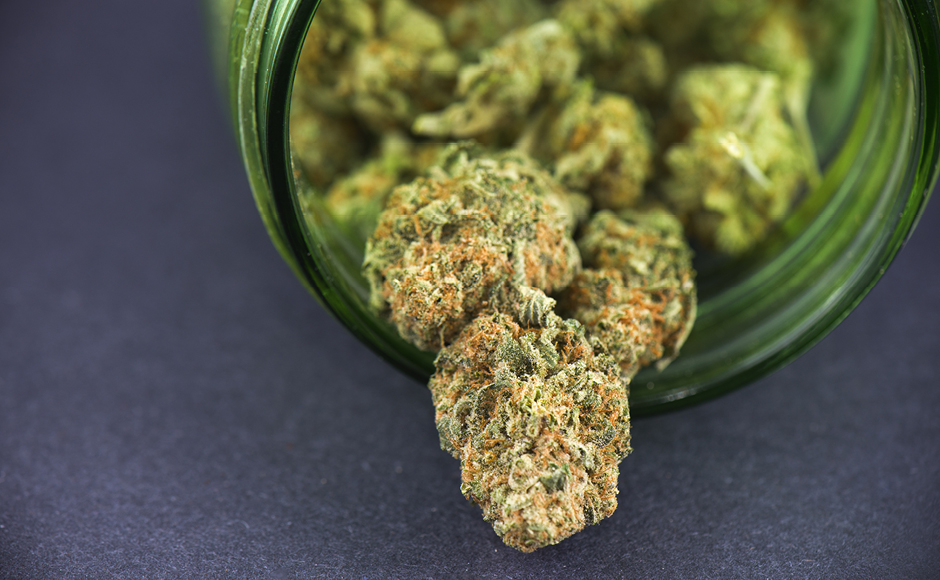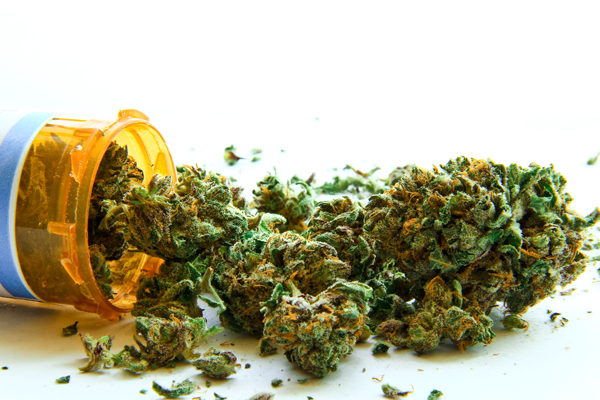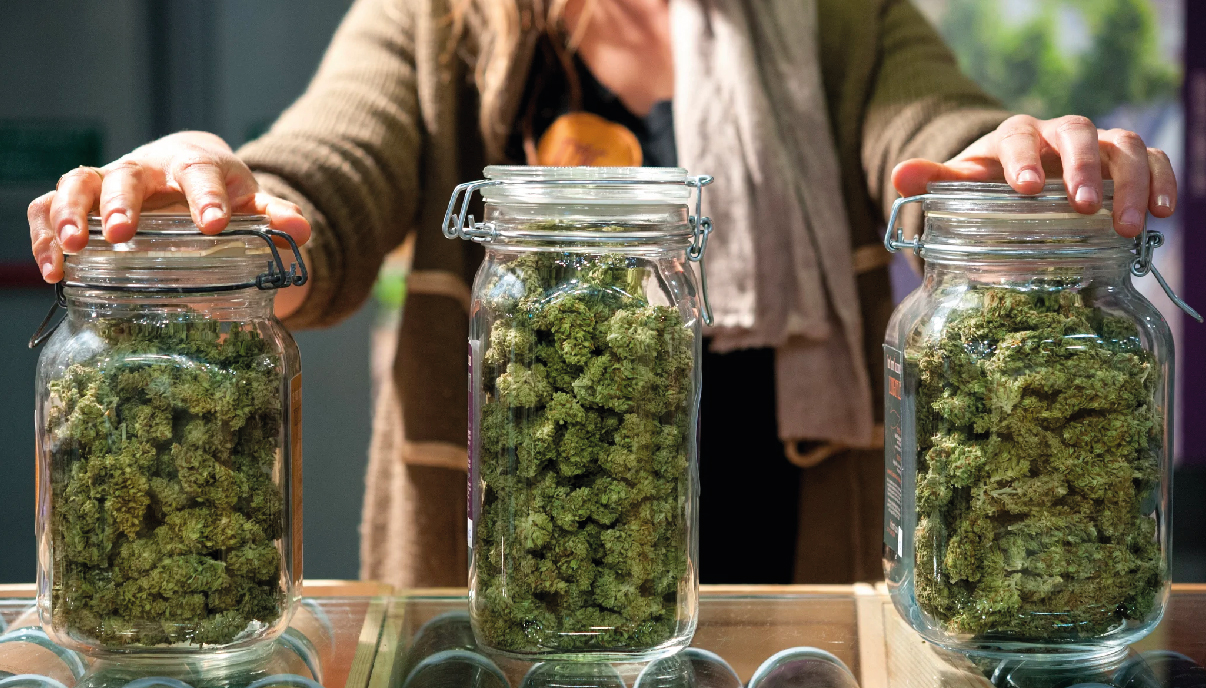Cure Marijuana: In order to preserve the final product’s shelf life and quality, marijuana buds must be dried or cured in order to remove excess moisture. After drying, the curing process begins. Curing removes the remaining moisture and chlorophyll from the buds, allowing the marijuana flower to achieve its desired state for that strain.
Drying racks are frequently used by growers to hang branches of marijuana plants. Once the buds have been cured, they are cut from their branches and placed in airtight containers. For optimal results, both processes necessitate a cool, dark environment. Growers can achieve reliable and reputable harvests by paying close attention to these 2 processes over time.
Why Do We Cure Marijuana Buds?
Cure Marijuana: For optimal flavor, potency, and longevity, drying and curing marijuana buds is essential. Marijuana buds could last up to a year or more without losing their potency or flavor if they are properly cured and cared for. Marijuana that has been properly dried and cured can yield products that are easier to smoke and more enjoyable for the user.
Throughout the drying and curing procedure, buds would then continue to alter their molecular structure. There will be some THC cannabinoids inside the buds that convert to cannabidiol (CBD) in the process (CBN). Curing is a time-consuming process for experienced growers. They’re looking for a good ratio of THC to CBN in their buds, which is a sign of a high-quality harvest.
Curing encourages the degradation of co-products throughout freshly harvested marijuana buds, which enhances the buds’ aroma and flavor. As soon as they’re picked, buds still have their sugars and starches from the plant’s previous growth. Aerosolized bacteria and enzymes will eventually break down these molecules. By removing these waste products, growers can produce buds that are easier to smoke, smell better, and taste better.

How Long Does It Take To Cure Marijuana?
Cure Marijuana: There is no hard and fast rule for how long it takes for marijuana to fully mature. There is considerable variation in the length of time it takes to cure marijuana depending on the conditions under which it is being processed. The curing process is influenced by a variety of factors, including humidity levels, temp, breathing methods, and curing containers. Temperature and humidity fluctuations can significantly lengthen the curing process. Several steps are taken by experienced growers in order to regulate these variables and obtain the best possible final product. Many times, a slow treatment is a wise choice.
How To Cure Marijuana
1. Transitioning From Drying To Curing: Cure Marijuana
Cure Marijuana: The buds can be removed from a plant immediately after harvesting, but many knowledgeable growers prefer to trim their buds after drying. Between the first and second week of drying, buds retain more cannabinoids than if they are retained on their branches. When preparing buds for curing, products like the Green Broz Model M Dry Clipper help maintain the integrity & potency of the buds.
2. Prepare A Dark Curing Environment
Cure Marijuana: The degradation of molecular components like THC and terpenes in dried buds is prevented by not exposing them to light during the curing process. A dark cupboard or box may be necessary if you plan on curing your buds in mason jars. In addition, some growers use glass containers that filter out all visible light, except for violet, in order to protect their buds. If you’re using auto-curing buckets or other professional curing equipment to cure your buds, you’ll want to make sure the room is completely dark.
3. Stash Flower For Curing: Cure Marijuana
Dry marijuana should be placed in airtight containers that are approximately 75% full when it is ready for curing. After filling the jar with buds, shake it to see if the buds are fully prepared for curing. It is likely that the buds are ready for curing if they rattle freely. If trying to shake the jar causes the buds to form clumps, they may require additional drying time.
4. Monitor Humidity And Temperature Levels
Cure Marijuana: For most plants, 45 to 65 percent humidity and a temperature of 21°C/69.8°F are ideal humidity and temperature, respectively. A hygrometer is the only method to quantify humidity. A daily check of the buds is recommended for the first 24 hours of the trying-to-cure process to ensure that no mold has formed. A buildup of anaerobic bacteria starts to break down the buds if the humidity level is too high. If you open the containers and immediately detect an ammonia smell, lower the humidity in the room or end up leaving the containers ajar for longer periods to resolve the problem. It’s recommended by many seasoned growers that containers be left exposed for three hours or more. In order to keep the air moist at all times, you can also use humidity packs in containers that are prone to humidity fluctuations.

How To Cure Marijuana With Automation
Cure Marijuana: “Burping” each jar of dried marijuana may be doable for novice growers, but as harvests increase in size, it can quickly become a laborious task. Automated curing is preferred by many experienced growers who harvest large quantities of marijuana buds.
‘Auto-curing buckets’ can be used to cure a product automatically. 5-gallon buckets with gamma seal lids are commonly used in the construction of these products. This greatly increases harvesting capacity, as each bowl can hold about two pounds of flowers. Auto-curing buckets necessitate some initial effort, but they save a lot of time and effort during curing.
Cure Marijuana: To create intake and exhaust functions, growers must drill holes in the buckets and insert silicone tubing capped with check valves. In place of the tedious task of unscrewing containers to allow the curing process to breathe, the tubes are connected to an air pump which regulates airflow. Additionally, large-scale growers use professional-grade technology to automate the curing process, which provides the same level of airflow as auto-curing buckets.

